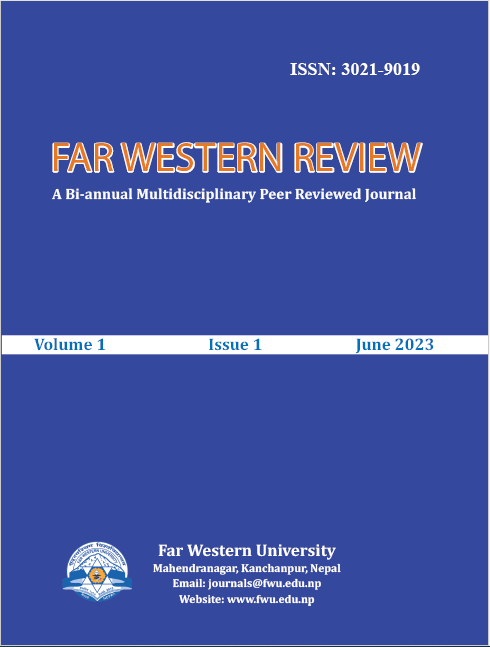Walker’s The Color Purple: Portrayal of Celie’s Struggle from Servitude to Sovereignty
DOI:
https://doi.org/10.3126/fwr.v1i1.58340Keywords:
Oppression, patriarchy, servitude, sovereignty, womanismAbstract
This paper attempts to explore Celie’s struggle for independence in a male dominated African American society as depicted in Alice Walker’s The Color Purple (1982). Focusing on the lives of African-American women in the Southern United states during 1930s, it unfolds the events of black male brutality towards black women. It exposes the ways that the central character, Celie, pursues, when she proceeds to her long journey to freedom. Celie passes through a difficult path of racial/patriarchal oppression before she gets sovereignty. She accepts the solidarity of the female community to accomplish her quest for identity. Applying textual inquiry approach, the present paper highlights the role of deep female relationships in the life of Celie, a poor black girl. Celie becomes stronger when she gets support from other women, which helps her to emancipate herself from the evils of patriarchy and sexism. Celie’s freedom goes through physical, then spiritual, and finally economic phases, specifically, when she establishes her own business. Narrating the accounts of under privileged black community, Walker clarifies that ‘womanism’ is the only medium that helps to liberate inconspicuous southern black women from patriarchy and structural racism and sexism. The harsh circumstances are the key factors which make African American community captive and black women’s lives miserable.
Downloads
Downloads
Published
How to Cite
Issue
Section
License
Copyright (c) 2023 Rajendra Prasad Bhatt

This work is licensed under a Creative Commons Attribution-NonCommercial 4.0 International License.
CC BY-NC: This license allows reusers to distribute, remix, adapt, and build upon the material in any medium or format for noncommercial purposes only, and only so long as attribution is given to the creator.




